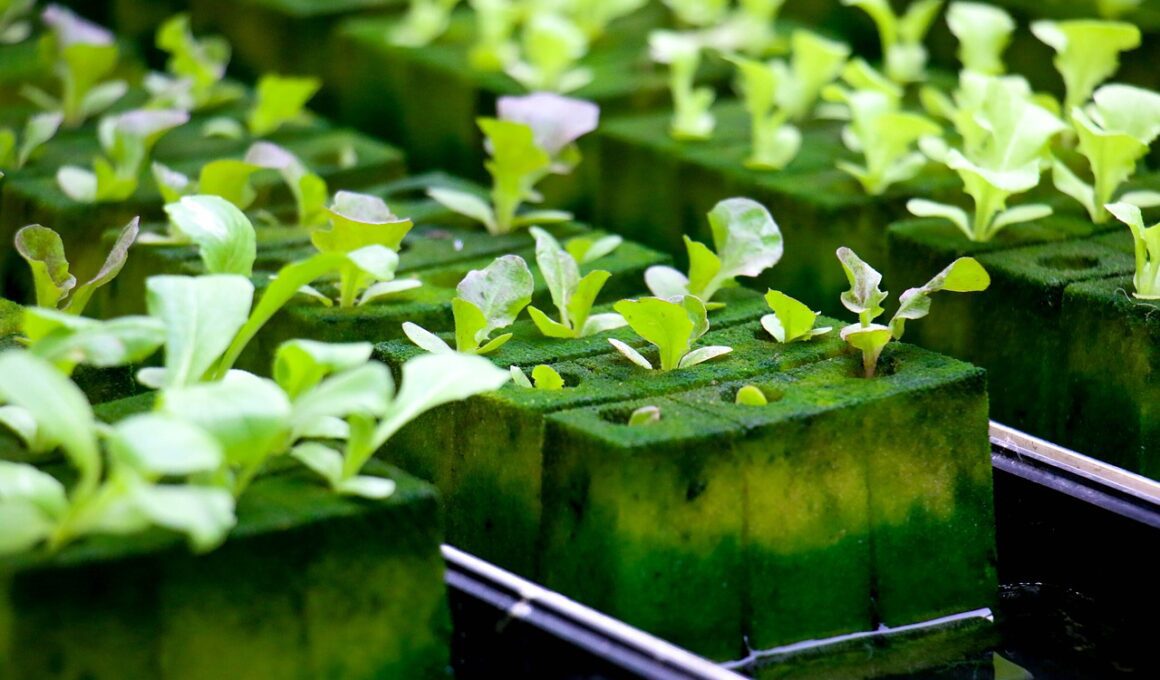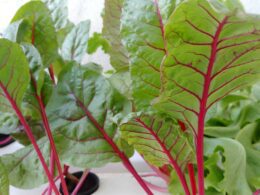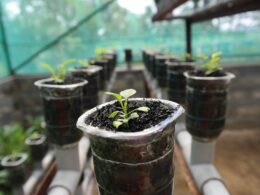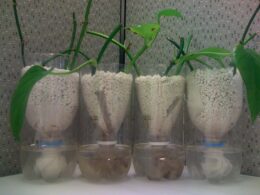Are you considering growing iceberg lettuce in your hydroponic system? If so, you’re in luck!
Iceberg lettuce is an excellent choice for hydroponics, as it is easy to grow, requires minimal maintenance, and produces high yields. Plus, it’s a staple in many households, making it a profitable crop to grow for sale.
One of the primary benefits of growing iceberg lettuce in hydroponics is the ability to control the plant’s environment. In a hydroponic system, you can adjust the temperature, humidity, and nutrient levels to create the ideal growing conditions for your crop. This results in healthier plants, faster growth, and a higher yield.
Additionally, hydroponics eliminates the need for soil, reducing the risk of soil-borne diseases and pests. Overall, growing iceberg lettuce in hydroponics is a safe and efficient way to produce a bountiful harvest.
Benefits of Growing Iceberg Lettuce in Hydroponics
Cultivating iceberg lettuce using a hydroponic system has numerous advantages. One of the biggest benefits is faster growth rates, which means you can harvest your lettuce much sooner than with traditional soil growing methods. This is because hydroponics provide the perfect environment for plants to grow, with optimal temperature, lighting, and nutrient levels.
As a result, you can enjoy fresh, crisp lettuce in just a few short weeks. Another advantage of growing iceberg lettuce using hydroponics is higher yields. Hydroponic systems allow you to grow more plants in a smaller space, which means you can produce more lettuce in the same amount of time.
Additionally, plants grown in hydroponics tend to be healthier and more robust, which means they are less susceptible to disease and pests. This means you can enjoy a larger, healthier crop of lettuce without having to worry about harmful chemicals or pesticides. When it comes to nutritional value and taste, comparing iceberg lettuce in hydroponics to traditional soil-grown lettuce, the results are impressive.
Hydroponic lettuce tends to be more nutrient-dense, as it is able to absorb more of the nutrients in the water. Additionally, hydroponically grown lettuce tends to have a crisper, fresher taste than traditional soil-grown lettuce. This is because the hydroponic system allows the lettuce to grow in a controlled environment, which means it can be harvested at the peak of freshness.
In summary, growing iceberg lettuce using a hydroponic system has numerous advantages. Hydroponics provide the perfect environment for cultivating this leafy green, from faster growth rates and higher yields to better nutritional value and taste. So why not give it a try and see for yourself how easy and rewarding it can be to grow fresh, healthy lettuce in your own home?
Ideal Growing Conditions for Iceberg Lettuce in Hydroponics
To grow healthy and delicious iceberg lettuce in hydroponics, you need to pay attention to three critical factors:
-
Temperature and humidity: Keeping the temperature and humidity within the ideal range promotes healthy growth and prevents diseases.
-
Light and nutrient requirements: Providing adequate light and nutrients will ensure that the lettuce grows quickly, with good flavor and texture.
-
pH and EC levels: Finally, maintaining the right pH and EC levels in your hydroponic system will ensure that the lettuce absorbs all the necessary nutrients for optimal growth.
Adjust the paragraph structure in the input to logically group complete sentences on their own lines, with a double new line after. Use contractions.
Temperature and Humidity
Maintaining the ideal temperature and humidity levels is crucial for ensuring a thriving and healthy crop in a hydroponic system. For iceberg lettuce, the temperature should be kept between 60-68°F during the day and 55-60°F at night. Any temperature higher than 75°F can cause the lettuce to bolt and become bitter.
Humidity optimization is also important for the growth of iceberg lettuce. The ideal humidity range is between 50-70%. When the humidity is too low, the leaves will become dry and brittle. On the other hand, high humidity can lead to fungal and bacterial diseases.
By controlling both temperature and humidity in your hydroponic system, you can ensure a successful crop of iceberg lettuce.
Light and Nutrient Requirements
Proper lighting and nutrient levels are essential for ensuring a thriving and healthy crop in your hydroponic system. Hydroponic lighting is crucial because plants rely on light for photosynthesis. Without adequate light, your plants will struggle to grow and will likely become stunted. On the other hand, too much light can also be harmful to your plants, so it’s important to strike a balance.
Generally, plants need around 12-16 hours of light per day, but this can vary depending on the specific crop you’re growing. In addition to proper lighting, nutrient deficiencies can also impact the health of your hydroponic crop. Since hydroponic plants rely on nutrient solutions rather than soil, it’s important to ensure that the solution you’re using contains all of the necessary nutrients.
Common nutrient deficiencies in hydroponics include a lack of calcium, magnesium, and iron. To prevent these deficiencies, make sure you’re using a high-quality nutrient solution and that you’re monitoring the pH levels of your solution regularly. With proper lighting and nutrient levels, your hydroponic crop can thrive and produce a bountiful harvest.
pH and EC Levels
Make sure you’re constantly checking the pH and EC levels of your nutrient solution to ensure optimal growth and health for your iceberg lettuce plants. It’s important to maintain the appropriate levels because if they’re too high or too low, your plants won’t be able to absorb nutrients properly, which can lead to stunted growth and even death.
To measure pH and EC levels, you can use a pH meter and an EC meter. The pH meter measures the acidity or alkalinity of your nutrient solution, while the EC meter measures the electrical conductivity, which indicates the level of nutrients in the solution.
Adjusting the pH and EC levels for optimal growth can be done by adding pH up or down solutions or increasing or decreasing nutrient concentrations. By keeping a close eye on these levels and adjusting as needed, you can ensure that your iceberg lettuce plants thrive in your hydroponic system.
Common Pests and Diseases in Iceberg Lettuce Hydroponics
When growing iceberg lettuce in hydroponics, you may encounter some common pests and diseases. These include aphids and whiteflies, powdery mildew, and root rot.
To prevent and treat these issues, you can use methods such as insecticidal soap for pests, fungicides for mildew, and properly managing the pH and nutrient levels of your hydroponic system to prevent root rot.
Aphids and Whiteflies
Are you tired of dealing with those pesky aphids and whiteflies in your hydroponic setup? These common pests can wreak havoc on your iceberg lettuce, causing damage to the plant and potentially spreading diseases. But don’t worry, there are natural remedies and chemical treatments available to help control these pests.
One natural remedy for aphids is to introduce ladybugs into your hydroponic setup. Ladybugs are natural predators of aphids and can help keep their population in check.
Another option is to use insecticidal soap, which can be sprayed directly onto the plants to kill aphids and whiteflies. However, be sure to follow instructions carefully and avoid spraying during peak sunlight hours to prevent plant damage.
With these remedies and treatments, you can keep your iceberg lettuce healthy and pest-free in your hydroponic setup.
Powdery Mildew and Root Rot
Now that you’ve learned about how to deal with aphids and whiteflies, let’s talk about another potential problem that you might face while growing iceberg lettuce hydroponically: powdery mildew and root rot. These are fungal diseases that can quickly spread and damage your plants if you’re not careful.
Fortunately, there are preventive measures you can take to avoid these issues. First, make sure to keep the humidity levels in your grow area under control, as high humidity can encourage the growth of powdery mildew.
It’s also a good idea to use a fungicide that’s specifically designed to combat powdery mildew and root rot. By taking these steps, you can ensure that your iceberg lettuce stays healthy and strong throughout its growth cycle.
Prevention and Treatment Methods
To keep your plants healthy and thriving, it’s important to take preventative measures and use fungicides to combat powdery mildew and root rot in your hydroponic grow area.
One way to prevent powdery mildew is to maintain proper ventilation and humidity levels. You can also use a preventative fungicide treatment, such as neem oil or potassium bicarbonate, to keep powdery mildew from taking hold.
Root rot prevention starts with maintaining proper water levels and avoiding overwatering, as well as using a good quality substrate. Additionally, using beneficial bacteria or fungi, such as Bacillus subtilis or Trichoderma, can help prevent root rot by promoting healthy root growth.
If you do encounter powdery mildew or root rot in your hydroponic system, there are treatment options available.
For powdery mildew, you can use a fungicide spray or a mixture of baking soda and water to kill the fungus.
For root rot, you may need to remove affected plants and sterilize your grow area with a hydrogen peroxide solution. It’s important to act quickly and treat these issues promptly to prevent further damage to your plants.
By taking preventive measures and using effective treatment options, you can keep your hydroponic lettuce growing strong and healthy.
Tips for Maximizing Your Iceberg Lettuce Yield
If you want to maximize your iceberg lettuce yield, there are several key points you need to focus on.
First, make sure you’re using proper harvesting techniques to avoid damaging the plant and to encourage regrowth.
Second, pay close attention to water and nutrient management to ensure your lettuce is getting everything it needs to grow strong and healthy.
Finally, consider crop rotation and succession planting to keep your hydroponic garden thriving and producing year-round.
Proper Harvesting Techniques
You’ll be amazed at how much more flavorful and satisfying your salads will be when you follow these expert tips for harvesting your fresh, homegrown iceberg lettuce. Here are some proper harvesting techniques to maximize the yield of your hydroponic lettuce:
- Use a sharp, clean knife or pair of scissors to cut the lettuce leaves as close to the base as possible.
- Harvest the outer leaves first, leaving the inner leaves to continue growing and producing.
- Avoid tearing or bruising the leaves, as this can lead to spoilage and reduce the quality of the lettuce.
- Immediately after harvesting, rinse the lettuce leaves in cool water and gently pat dry with paper towels to remove excess moisture.
By following these harvesting techniques and proper post-harvest handling, you can ensure that your iceberg lettuce is fresh, flavorful, and safe to consume. Enjoy your homegrown salads with confidence and satisfaction!
Water and Nutrient Management
Managing the water and nutrients in your hydroponic iceberg lettuce setup is crucial for achieving the best results. The water quality you supply to your plants should be free from contaminants and at an appropriate temperature. Consider using a water filter or purification system to ensure that your lettuce receives the clean water it needs.
Additionally, the nutrient solution you provide should be carefully measured and balanced to meet the specific needs of your iceberg lettuce. Too much or too little of certain nutrients can negatively impact the growth and flavor of your plants.
Regular monitoring of your hydroponic system is necessary to ensure that your plants are receiving the proper amount of water and nutrients. Be sure to check the pH level and electrical conductivity of your nutrient solution on a daily basis and make adjustments as needed. Also, keep an eye on the water level in your reservoir and add more water as necessary.
With proper water and nutrient management, your hydroponic iceberg lettuce will thrive and provide you with delicious, fresh greens year-round.
Crop Rotation and Succession Planting
In order to keep your crop rotation and succession planting on track, it’s important to plan ahead and be mindful of the unique needs of each plant.
Succession planting benefits your hydroponic garden by ensuring a continuous harvest throughout the growing season. You can stagger planting times of the same crop or plant different crops that mature at different rates. This way, you can make the most out of your growing space and resources.
Crop rotation strategies involve changing the type of crop that you plant in a particular area. This can help prevent soil-borne diseases and pests from taking hold and depleting nutrients. It also allows for a more balanced use of nutrients in your hydroponic system.
By rotating crops, you can also avoid planting the same crop in the same spot year after year, which can lead to a decline in plant health. Be sure to research the specific needs of each crop and plan accordingly to ensure a successful and bountiful harvest.
Drawbacks and Alternatives to Iceberg Lettuce in Hydroponics
If you’re looking for more variety and flavor in your hydroponic garden, there are plenty of alternative crops that can add a burst of excitement to your meals. However, iceberg lettuce, a popular choice, has its drawbacks. It lacks the nutritional value of other greens like kale, spinach, and arugula. It also requires a lot of space to grow and has a relatively short shelf life.
Fortunately, there are many alternative greens that are easy to grow in hydroponics and offer a range of flavors and nutrients. For example, kale is a powerhouse of vitamins and minerals and can be grown year-round in hydroponics. Spinach is another nutrient-rich option that can be harvested multiple times before needing to be replanted. Arugula, with its peppery taste, is a popular choice for salads and sandwiches and can be grown quickly in hydroponics.
While iceberg lettuce may have its place in hydroponic gardening, it’s worth exploring other options to add variety and nutrition to your meals. By experimenting with different crops, you can discover new flavors and textures that will keep your taste buds satisfied. So don’t be afraid to try something new and see what your hydroponic garden can produce.
Frequently Asked Questions
What are some common hydroponic systems used for growing iceberg lettuce?
If you’re looking to grow iceberg lettuce using hydroponics, there are a few common systems you can use.
One popular option is vertical farming, which allows you to grow more plants in a smaller space.
Another important factor to consider is lighting techniques. LED lights are often used in hydroponic systems because they’re energy-efficient and can be customized to provide the right spectrum of light for your plants.
By using these techniques, you can create a successful hydroponic system for growing iceberg lettuce that’s both efficient and effective.
How long does it typically take for iceberg lettuce to reach maturity in hydroponics?
To ensure your iceberg lettuce reaches maturity in hydroponics, it’s important to pay attention to two key factors: hydroponic lighting and nutrient timing.
Hydroponic lighting is crucial for providing the necessary amount of light for photosynthesis and growth. Make sure to use high-quality LED grow lights that emit the right spectrum of light for lettuce growth.
Nutrient timing is equally important as you need to provide your plants with the right nutrients at the right time. This means monitoring the pH levels of your nutrient solution and adjusting the nutrient levels accordingly.
With the right hydroponic lighting and nutrient timing, you can expect your iceberg lettuce to reach maturity in as little as 30 days.
Can iceberg lettuce be grown in hydroponics year-round?
Growing iceberg lettuce in hydroponics is a great way to have fresh, crisp lettuce all year round. You can have a steady supply of lettuce that’s full of nutrients and ready for harvest in just a few weeks. To achieve year-round production, you’ll need to give your plants optimal growing conditions. This includes the right temperature, humidity, and nutrient levels.
With a little bit of effort and attention to detail, you can enjoy fresh, healthy lettuce whenever you want. You won’t have to worry about the weather or other external factors that can affect traditional outdoor gardening.
Are there any special nutrient requirements for growing iceberg lettuce in hydroponics?
When it comes to growing iceberg lettuce in hydroponics, there are specific nutrient requirements that must be met.
Nutrient solutions that contain a balanced mix of essential minerals like nitrogen, potassium, and phosphorus are crucial for the growth and development of healthy lettuce plants.
Maintaining the pH levels of the nutrient solutions is also important, as lettuce thrives in a pH range of 5.5 to 6.5. To ensure the best results, it’s recommended to test the pH levels regularly and adjust as needed.
By providing the right nutrient solutions and maintaining the optimal pH levels, you can grow healthy, delicious iceberg lettuce hydroponically throughout the year.
How does the taste and texture of hydroponically grown iceberg lettuce compare to conventionally grown lettuce?
When it comes to taste and texture, hydroponically grown iceberg lettuce can be just as delicious and crunchy as conventionally grown lettuce. In fact, some people argue that hydroponic lettuce tastes even better due to its consistent growing conditions.
In terms of nutritional value, hydroponic lettuce can offer just as many nutrients as conventionally grown lettuce, if not more. With hydroponics, you have the ability to control the exact nutrients that are given to the plants, resulting in a potentially higher nutrient density.
So, whether you choose to grow your iceberg lettuce conventionally or hydroponically, you can rest assured knowing that both options can provide a tasty and nutritious addition to your meals.
Conclusion
Congratulations on learning about the benefits and ideal conditions for growing iceberg lettuce in hydroponics! With proper care, you can maximize your yield and enjoy delicious, fresh produce.
However, it’s important to be aware of common pests and diseases that may affect your crop and take steps to prevent or manage them.
Although iceberg lettuce is a great choice for hydroponics, there are also alternative crops that may suit your needs better. Consider experimenting with different varieties to find what works best for you.
Keep learning and exploring the world of hydroponic gardening, and enjoy the fruits (and vegetables) of your labor!









